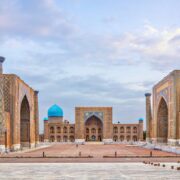
Ready for an adventure that combines stunning landscapes, serene lakes, and challenging trails? The Brahmatal Trek offers all this and more. Nestled in the heart of the Himalayas, this trek is a must for those who crave both beauty and adventure. Let’s dive into everything you need to know to conquer the Brahmatal Trek.
Brahmatal Trek
Location and Geographical Details
The Brahmatal Trek is located in the Chamoli district of Uttarakhand, India. It spans an elevation of approximately 12,250 feet, offering breathtaking views of the snow-clad peaks of Trishul and Nanda Ghunti.
History and Cultural Significance
Brahmatal is steeped in mythological significance, believed to be the meditation site of Lord Brahma. This trek not only offers natural beauty but also a deep sense of cultural immersion, connecting trekkers with local legends and traditions.
Best Time to Trek
Seasonal Overview
The ideal time to embark on the Brahmatal Trek is during the winter months from December to March. This period promises clear skies, crisp air, and the enchanting sight of snow-covered trails.
Weather Considerations
Winter treks bring cold temperatures, often dropping below freezing at night. Proper gear is essential to stay warm and safe during your journey.
Preparing for the Trek
Physical Fitness Requirements
The Brahmatal Trek is moderately challenging, requiring a decent level of physical fitness. Regular cardio exercises, strength training, and endurance-building activities will help you prepare.
Mental Preparation
Trekking can be as much a mental challenge as a physical one. Stay positive, prepare for varying conditions, and cultivate a strong mindset to push through tough moments.
Packing Essentials
Clothing and Gear
Layering is key. Pack thermal wear, insulated jackets, waterproof pants, and sturdy trekking boots. Don’t forget essentials like gloves, beanies, and sunglasses.
Food and Water Supplies
Carry high-energy snacks, instant meals, and water purification tablets. Hydration is crucial at high altitudes, so ensure you have access to clean water throughout the trek.
Getting to the Base Camp
Travel Options to Lohajung
Lohajung serves as the base camp for the Brahmatal Trek. You can reach Lohajung by taking a train or flight to Kathgodam, followed by a scenic drive to the base camp.
Accommodation at the Base Camp
Basic lodges and guesthouses are available at Lohajung. It’s a good idea to book in advance, especially during peak trekking season.
Day-by-Day Itinerary
Day 1: Arrival at Lohajung
Arrive at Lohajung, acclimate to the altitude, and meet your trek leader and fellow trekkers.
Day 2: Lohajung to Bekaltal
The trek begins with a gradual ascent through oak and rhododendron forests. Camp overnight by the serene Bekaltal Lake.
Day 3: Bekaltal to Brahmatal
Today’s trek is a mix of steep climbs and gentle slopes, leading you to the picturesque Brahmatal Lake. Enjoy the stunning reflections of the surrounding peaks in the lake’s calm waters.
Day 4: Brahmatal to Tilbudi
Trek to the highest point of the trek, Brahmatal Top, and then descend to Tilbudi. Revel in panoramic views of the Himalayan ranges.
Day 5: Tilbudi to Lohajung
Descend back to Lohajung, marking the end of your trekking adventure. Celebrate with your group and reflect on the journey.
Trek Highlights
Scenic Landscapes
From dense forests to expansive meadows and frozen lakes, the Brahmatal Trek offers diverse and captivating landscapes.
Key Viewpoints and Photo Spots
Capture memorable photos at Brahmatal Lake, Jhandi Top, and along the ridgelines with the majestic peaks as your backdrop.
Challenges on the Trail
Altitude Sickness
Be mindful of altitude sickness symptoms such as headaches, nausea, and dizziness. Ascend gradually and stay hydrated.
Weather Hazards
Sudden weather changes can occur. Be prepared with appropriate gear and always check the forecast before setting out.
Safety Tips
Essential Precautions
Always trek with a group, follow your guide’s instructions, and keep emergency contacts handy. Familiarize yourself with basic first aid.
Emergency Contacts and Procedures
Keep a list of local emergency numbers. In case of severe altitude sickness or injuries, descend immediately and seek medical help.
Eco-Friendly Trekking
Leave No Trace Principles
Respect nature by carrying out all waste, minimizing campfire impacts, and avoiding wildlife disturbance.
Local Community Support
Engage with and support local communities by purchasing local goods and respecting their customs and traditions.
Cultural Immersion
Interaction with Locals
Take the time to interact with local villagers. Learn about their way of life, traditional practices, and perhaps even share a meal.
Understanding Regional Traditions
Participate in or observe local festivals and rituals if they coincide with your trek dates. This enriches your trekking experience with cultural depth.
Post-Trek Care
Recovery Tips
Post-trek, rest adequately, hydrate well, and consume nutritious foods to aid muscle recovery. Gentle stretching can also help alleviate soreness.
Sharing Your Experience
Document your journey through photos, blogs, or vlogs. Sharing your story can inspire others and provide valuable insights for future trekkers.
Cost Breakdown
Estimated Budget
Plan for expenses such as travel, accommodation, guide fees, permits, gear rental, and food. A rough estimate for the entire trek can range between $200 to $500, depending on your preferences.
Cost-Saving Tips
Booking in advance, traveling in groups, and renting gear instead of buying can significantly reduce costs.
Conclusion
The Brahmatal Trek is an unforgettable adventure that promises a blend of natural beauty, physical challenge, and cultural immersion. With proper preparation and a positive mindset, you can conquer this trek and create memories that will last a lifetime.











